

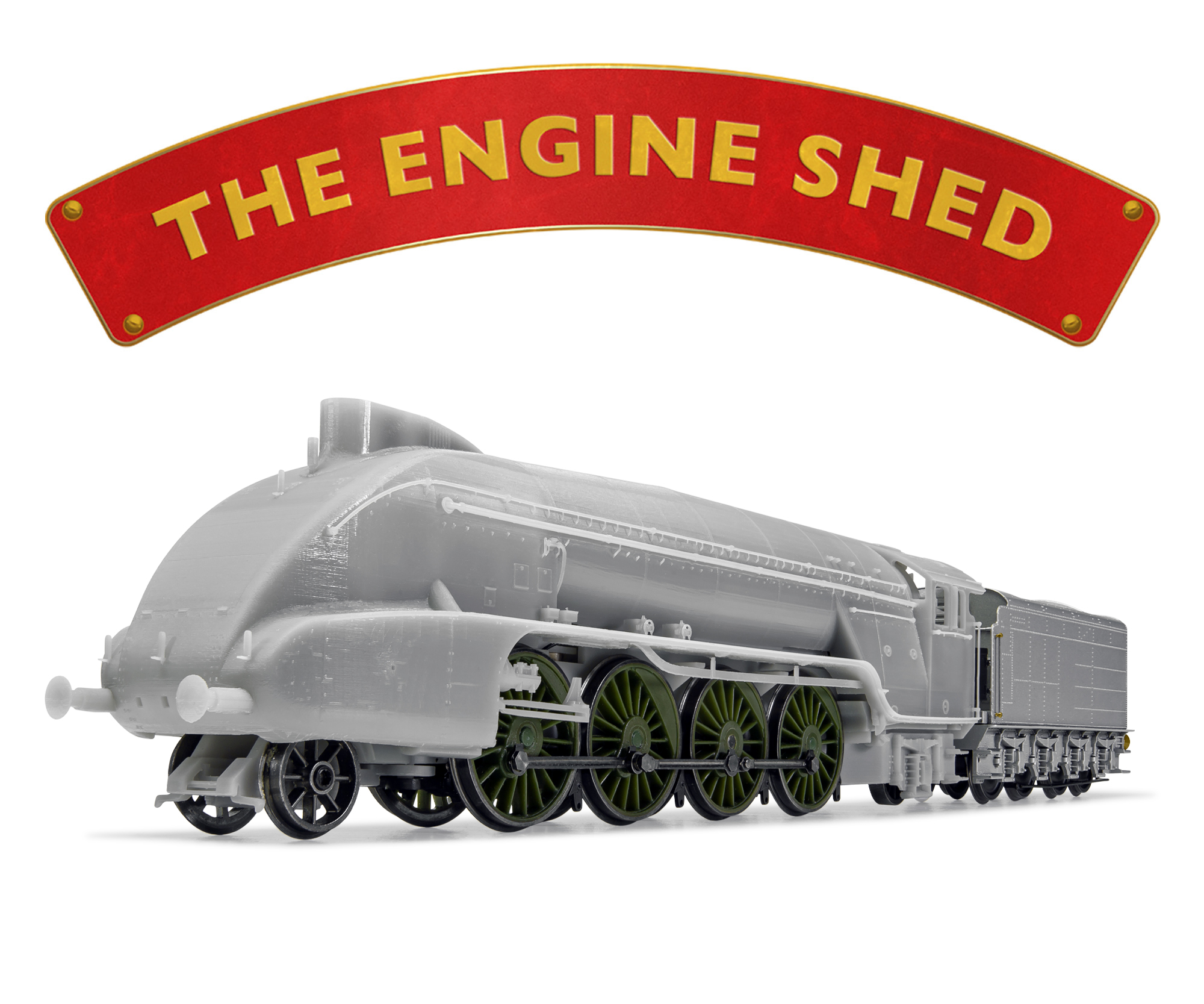
Hello and welcome to another exciting edition of the Engine Shed. As usual it has been a busy month here at Hornby, but also a very exciting one as we begin to see more of our new projects take shape. This edition we will be taking a look at the first physical samples of the all new P2 locomotives, some stunningly decorated Railroad Plus models, engineering samples of the Maunsell Dining Saloons and the latest W1 decorated model.
This month we are pleased to be able to share with you photographs of the latest printed samples of two of our upcoming LNER Class P2 locomotives. Printed samples such as these are the next step after CAD work is finalised and are used to check that the overall proportions of the physical model match what we have been seeing on the virtual CAD model. They can also be used to check for assembly issues and to check that any overhangs through curves and points fit within the loading gauge of 00 scale. Being such a lengthy locomotive, these samples have been crucial in engineering a solution to enable the leading pony truck to follow the rails without coming out too far from under the chassis. This was important as we did not want to cut away any of the aerodynamic shrouding around the cylinders on the streamlined variant.
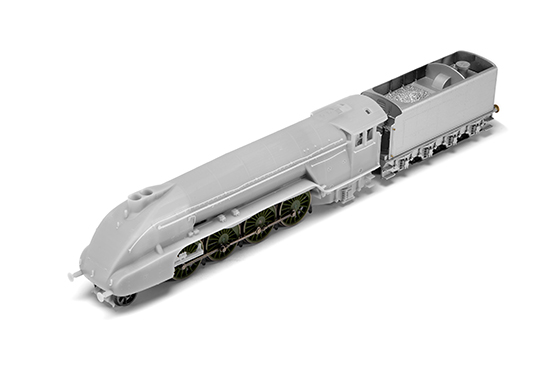 Above: P2 Samples showing a prototype for LNER Locomotive 2003 ‘Lord President’. The body and frames are new but until engineering samples are ready a tender taken from one of our recent A2/2s and wheels taken from our older model of 2001 ‘Cock O’ the North’ are stepping in.
Above: P2 Samples showing a prototype for LNER Locomotive 2003 ‘Lord President’. The body and frames are new but until engineering samples are ready a tender taken from one of our recent A2/2s and wheels taken from our older model of 2001 ‘Cock O’ the North’ are stepping in.
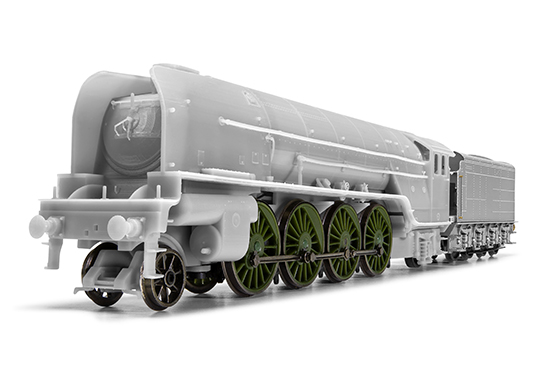
Above: These samples show the body and cylinders of 2007 ‘Prince of Wales’ sat upon the same chassis used for the above ‘Lord President’ and again borrow a tender and wheels form other models. The body is not quite flush with the chassis however this should not be an issue on future models as it relates to the nature of the printed component materials. Despite this, it is clear that our P2s will be very imposing models.
The express services on the Edinburgh to Aberdeen main line had always posed an issue for the LNER. The double heading of Pacifics was prohibited, but the heavy gradients meant that a single locomotive alone couldn’t sustain the speed required over the route. This often meant a compromise was needed, with two smaller locomotives double heading but rarely delivering the desired performance. Gresley realised the solution was to create a new class of locomotive that could eliminate the need for double heading while still having the traction and power needed. For Gresley then the answer was simple, to develop the 2-8-2 P2.
One of the issues the P2 design did face was that the long wheelbase was unsuited for the tight curves on the route they were intended to serve. Additionally, there were some problems with the leading pony truck, although it is often stated that this could have been solved in a similar manner to the fix applied to the V2 locomotives. Edward Thompson however was having none of it, instead being convinced that the P2s had not been the answer after all. To the dismay of many he ordered that all of the P2s be rebuilt as A2/2s, acting as proof of concepts for his standardised A2/3 design. Despite effectively being non-streamlined A4s the A2/2s struggled with their duties on the Edinburgh to Aberdeen line, offering little apparent advantage over the old P2s and introducing new problems such as excessive wheel slip.
What are your thoughts; to P2 or not to P2?
It has been a while since we brought you pictures of the new W1 Class models. A decoration sample of the photographic grey streamlined W1 was featured in the March edition of the Engine Shed, while decoration samples of the other available model variations were shared towards the end of last year. In total our 2020 and 2021 releases amount to eight variations of the W1 ‘Hush-Hush’ making the locomotive one of our most thorough studies to date.
Since we last discussed the W1, there have been significant production changes introduced as part of a push to guarantee that these models meet stringent quality expectations. These latest decoration samples feature improved paint finishes as well as being assembled to an even higher standard. A few changes are still required, namely the inclusion of additional cab detail to bring the level of detail in-line with other Hornby upcoming releases.
Below are some images of our latest samples showing the extent of the Hornby W1 range:

The un-rebuilt group featuring from left to right:
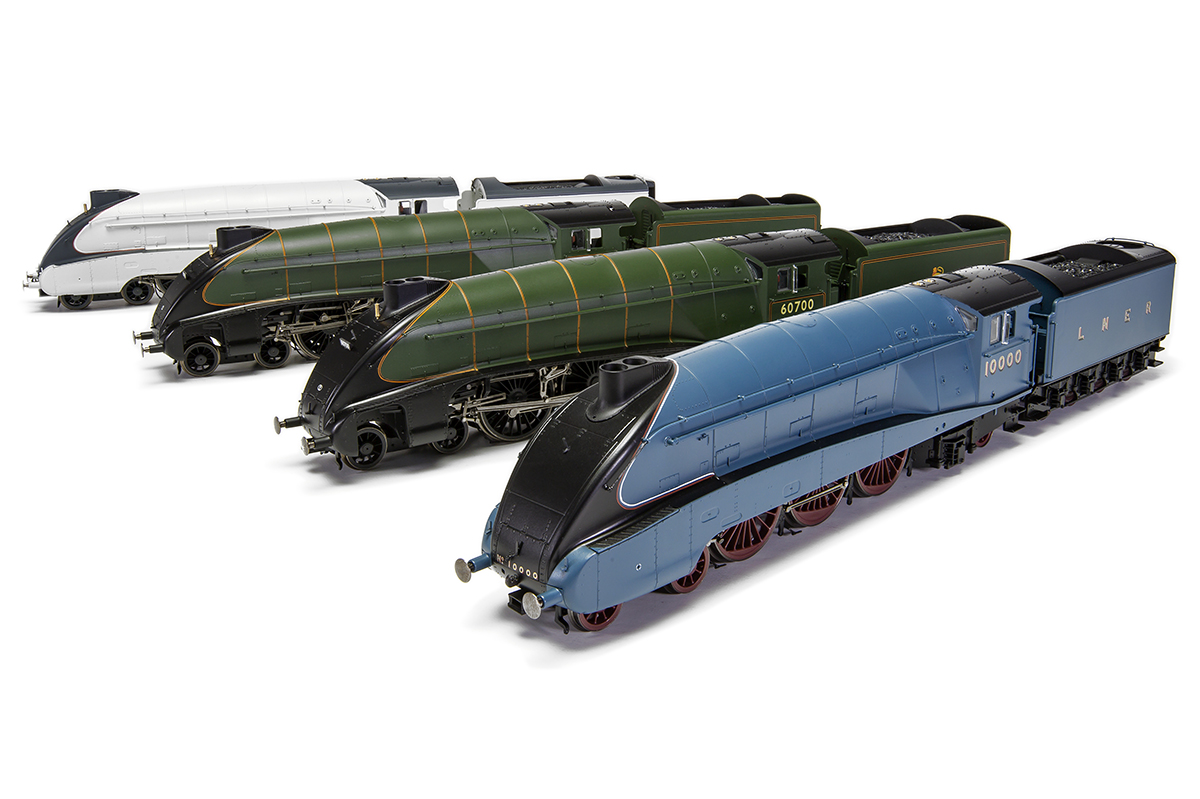
The Streamlined locomotives including, from left to right:
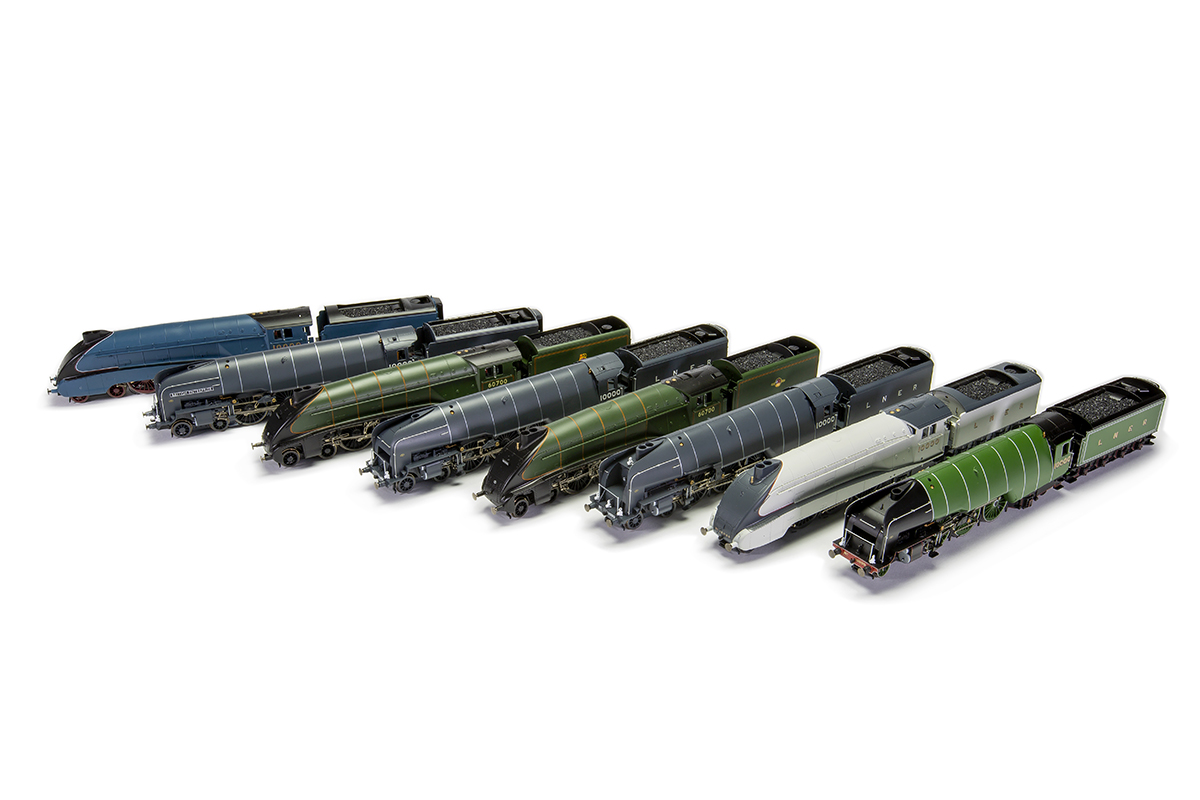
Finally, this stunning group photo, quite an occasion as this is the first time that we have been able to get the whole family together in one place! We would love to see your comments below about which W1 is your favourite.
The impact of the Class 59 on Britain’s railways cannot be overstated. The Class was the first produced by an American manufacturer to operate on Britain’s railways and led to the development of the hugely popular Class 66, a class that shares many components with the Class 59. With its many bright liveries, the Class 59 fits perfectly into Hornby’s Railroad Plus range which was introduced in 2020. The Railroad Plus range takes some of the most loved Railroad locomotives and applies top level decoration, thereby offering amazing value, perfect for those who like to collect large fleets of locomotives.
Below are some images of the latest Hornby Class 59 decorated sample, showing off the Hanson livery:
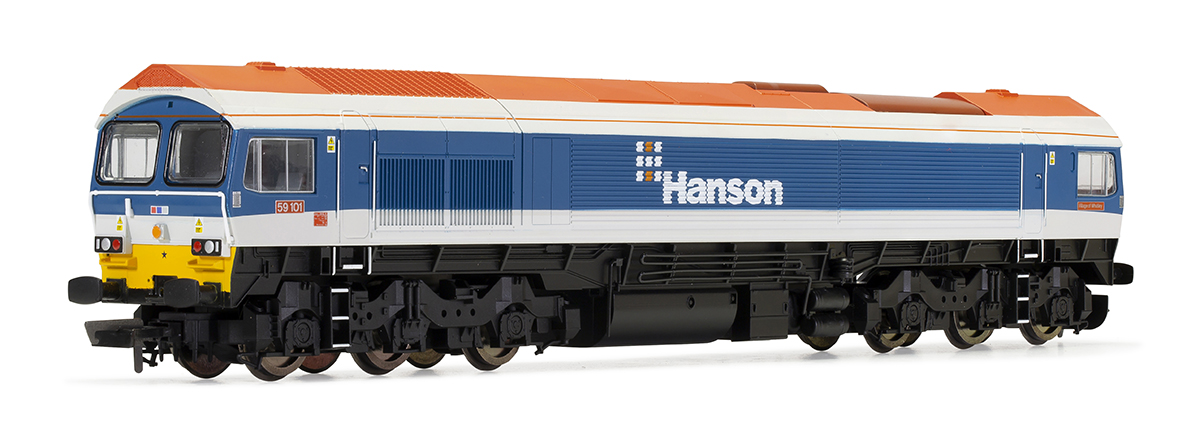

R30070 - Hanson, Class 59, Co-Co, 59101 - Era 10
Another group of samples received by Hornby this month are the Class 37 Railroad Plus locomotives. As with the Class 59 above they offer exquisite livery detail including etched nameplates where appropriate.
Entering service as the English Electric Type 3, the British Rail Class 37 diesel locomotives were built at the Vulcan Foundry in Newton-le-Willows in a Co-Co configuration, based on locomotive designs for export markets. Built to undertake both freight and passenger work across all BR sectors, these engines proved highly capable and extremely reliable. British Rail first placed an order for forty-two Class 37 locomotives in January 1959, the first of which was delivered in November 1960, entering service on 2 December with the last of this original batch complete by mid-1962, by which time subsequent orders had been placed. The last of the 309 locomotives built was delivered to the Western Region on 9 November 1965, originally numbered in the range D6700-D6999 and D6600-D6608. Many Class 37 locomotives were refurbished in the 1980s, extending their life. As a result, the Class 37 remains in service to this day as one of the longest serving classes on British railways. Second-hand locomotives have been exported to railways in France and Spain while in the UK many locomotives no longer required to work have been preserved.
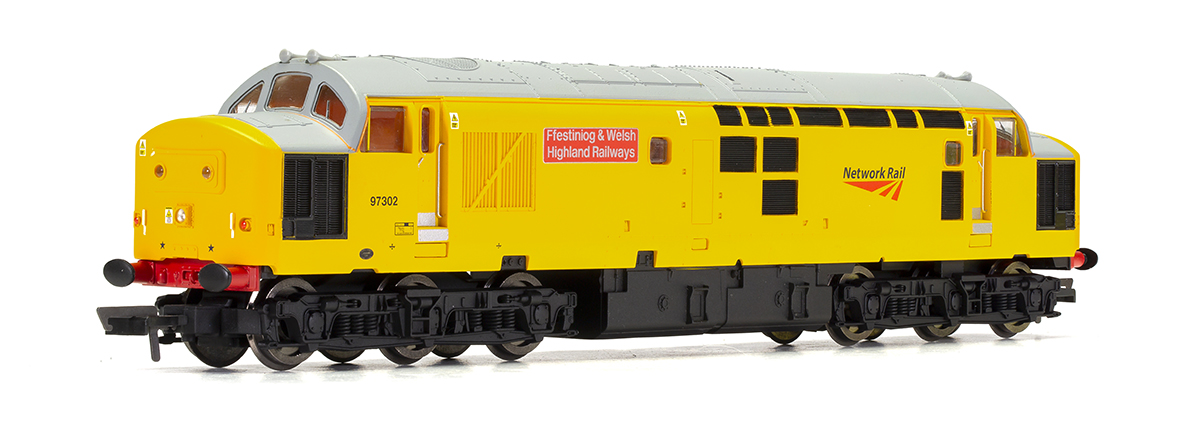
R30044 - Network Rail, Class 37, Co-Co, 97302 'Ffestiniog & Welsh Highland Railways' - Era 11
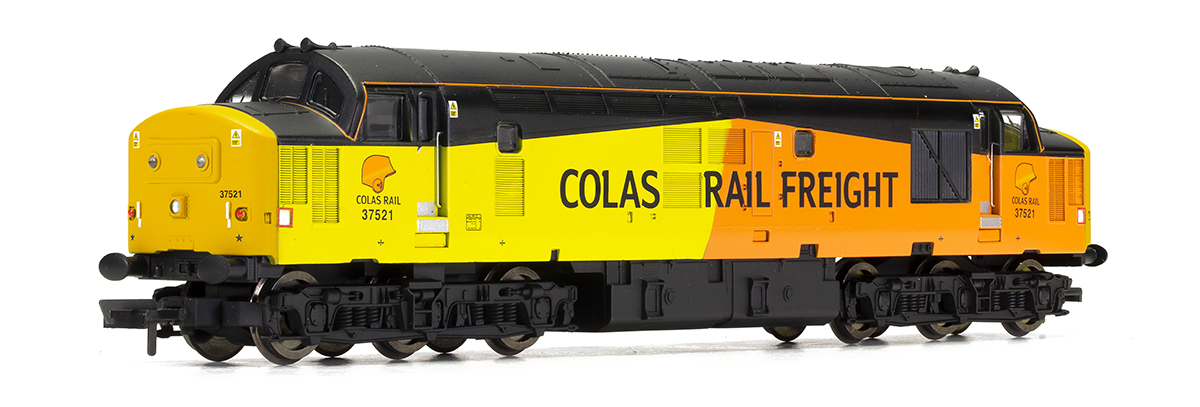 R30041TTS - Colas Rail, Class 37, Co-Co, 37421 - Era 11 (Sound Fitted)
R30041TTS - Colas Rail, Class 37, Co-Co, 37421 - Era 11 (Sound Fitted)
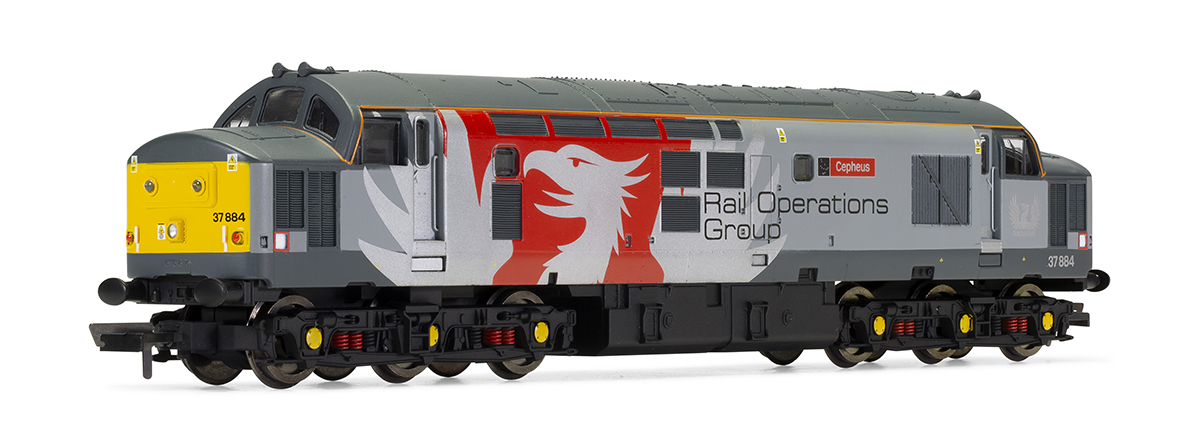
R30047 - ROG, Class 37, Co-Co, 37884 ‘Cepheus’ - Era 11
Here at Hornby the busy month has extended to deliveries, with heaps of new locomotives and rolling stock arriving at our distribution centre. Below we have chosen a few of our favourite new arrivals including the new LNER Farewell Tour Mk3s, the beautiful Hornby Dublo ‘City of Leicester’ and our latest Class 66s.

After an iconic life of service on the East Coast Main Line, LNER removed its Inter-City 125s from operations at the end of 2019. To celebrate LNER announced a farewell rail tour using power cars 43206 and 43312 along with 7 Mk3 coaches. The entire train was repainted in the original blue, grey and yellow livery and the tour lasted for four days. These coaches offer a great opportunity to run the famous blue/grey liveried Mk3s on a modern era layout.
The new coaches available can be found here:
In addition, we also have an additional selection of standard LNER livery Mk3s with new running numbers which are scheduled to arrive shortly:

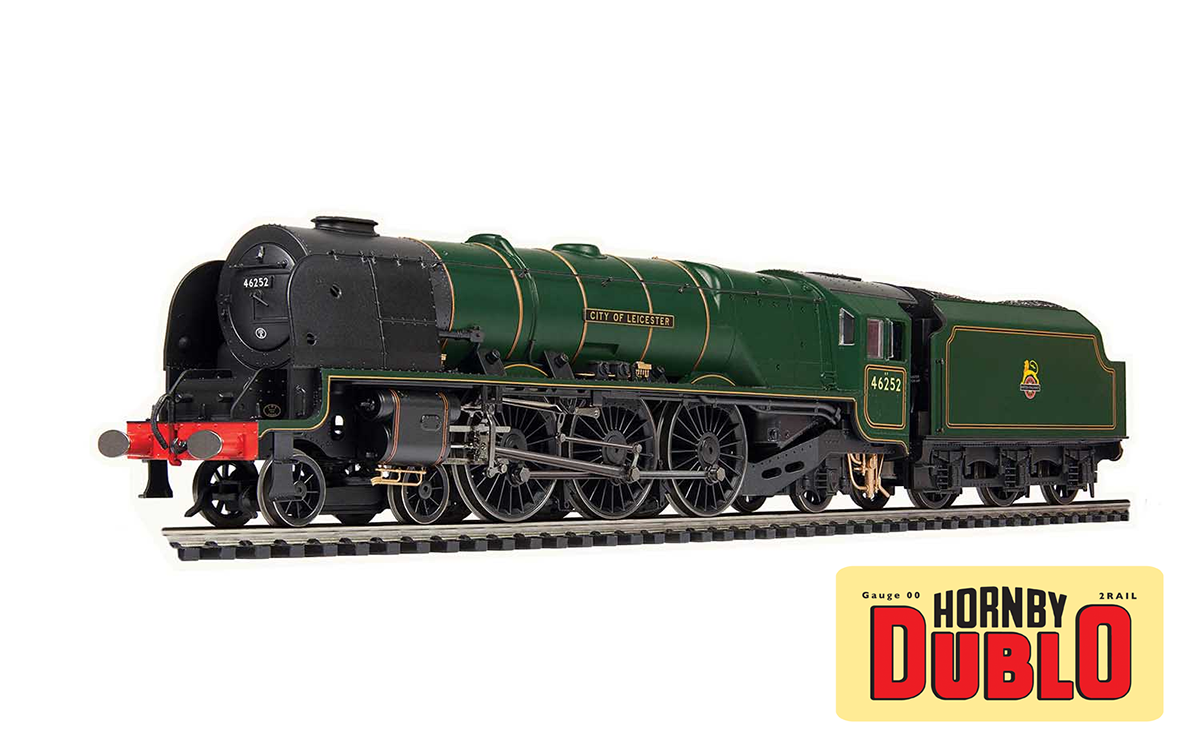
46252 City of Leicester was built at Crewe and entered service at the end of June 1944. The locomotive was built to Stanier's conventional design with a double chimney, although the smoke deflectors were not fitted until March 1945. It was also one of the 'Duchesses' that were briefly coupled with streamlined tenders from new. Like all new Hornby Dublo locomotives, the model features extensive die-cast bodywork.
Hornby’s 2021 range announcement included a stunning collection of seven new Class 66 locomotive liveries to choose from including four of the GBRf fleet, one from Colas Rail Freight, the Bardon Aggregates liveried Freightliner and the unique DB Cargo UK ‘Delivering For Our Key Workers’ livery.
The Class 66, produced primarily in Canada, later in the USA, is a heavy freight locomotive that can be found across all corners of the British railway network. With the privatisation of British rail freight, the newly formed EWS found itself with a monopoly on freight rail transportation but was faced with high maintenance costs due to inheriting an ageing and diverse fleet of locomotives. Having seen the success of the recent Class 59, which had been built in small numbers but possessed excellent performance and incredible reliability, EWS placed a huge order with Electromotive Diesel, a part of General Motors.
The design of the Class 66 was heavily based upon the Class 59, featuring the same body design but with new traction motors enabling higher speeds and self-steering bogies to reduce rail ware. The design also shares components with the Irish Class 201 and various American EMD locomotives which pioneered the self-steering technology. The success of the class saw EMD expand sales to operators both in the UK and abroad, and today the class and its derivatives can be found across Europe and even operate in some African countries.

R30019 - Colas, Class 66, Co-Co, 66850 'David Maidment OBE' - Era 11

R30020 - GBRf, Class 66, Co-Co, 66713 'Forest City' - Era 11

R30021 - GBRf, Class 66, Co-Co, 66721 'Harry Beck' - Era 11
 R30022 - GBRf, Class 66, Co-Co, 66709 'Sorrento' - Era 10
R30022 - GBRf, Class 66, Co-Co, 66709 'Sorrento' - Era 10
 R30023 - GBRf, Class 66, Co-Co, 66773 'Pride of GB Railfreight' - Era 11
R30023 - GBRf, Class 66, Co-Co, 66773 'Pride of GB Railfreight' - Era 11
 R30024 - Freightliner, Class 66, Co-Co, 66623 'Bill Bolsover' - Era 11
R30024 - Freightliner, Class 66, Co-Co, 66623 'Bill Bolsover' - Era 11
 R30074 - DB Cargo UK Class 66, Co-Co, 66113 'Delivering For Our Key Workers' - Era 11
R30074 - DB Cargo UK Class 66, Co-Co, 66113 'Delivering For Our Key Workers' - Era 11
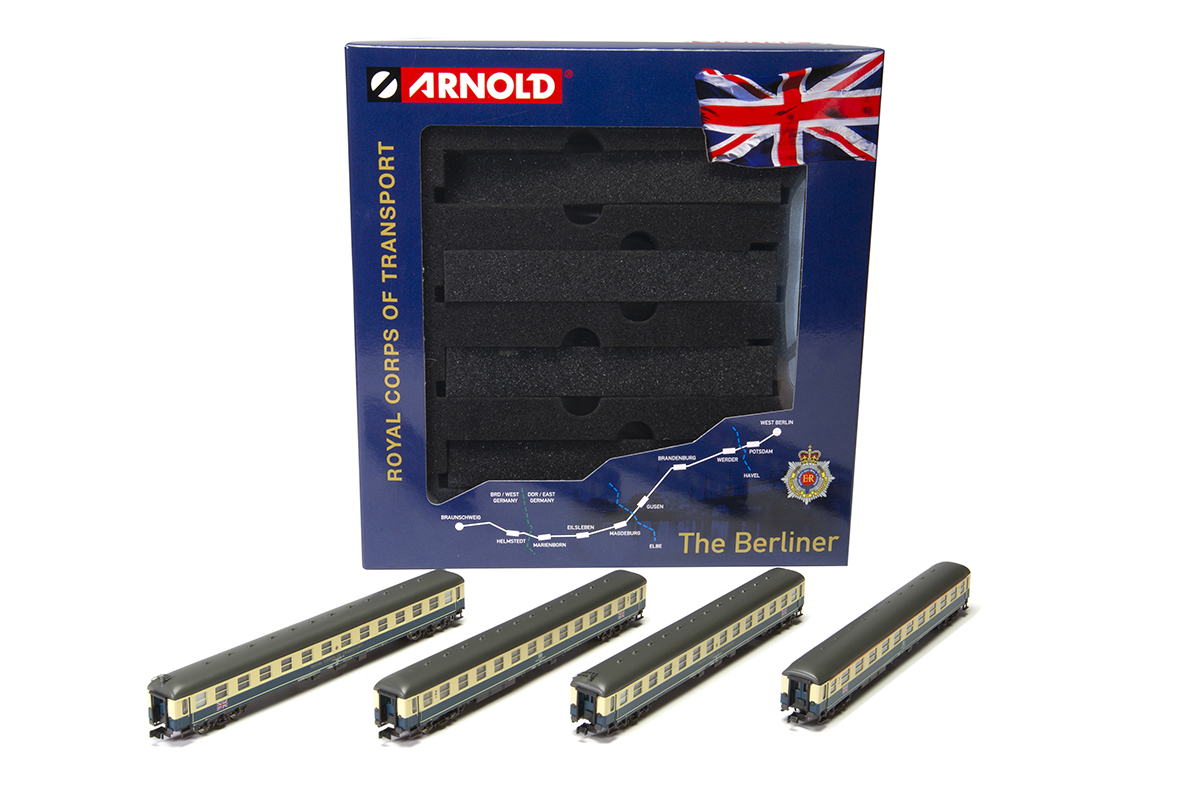
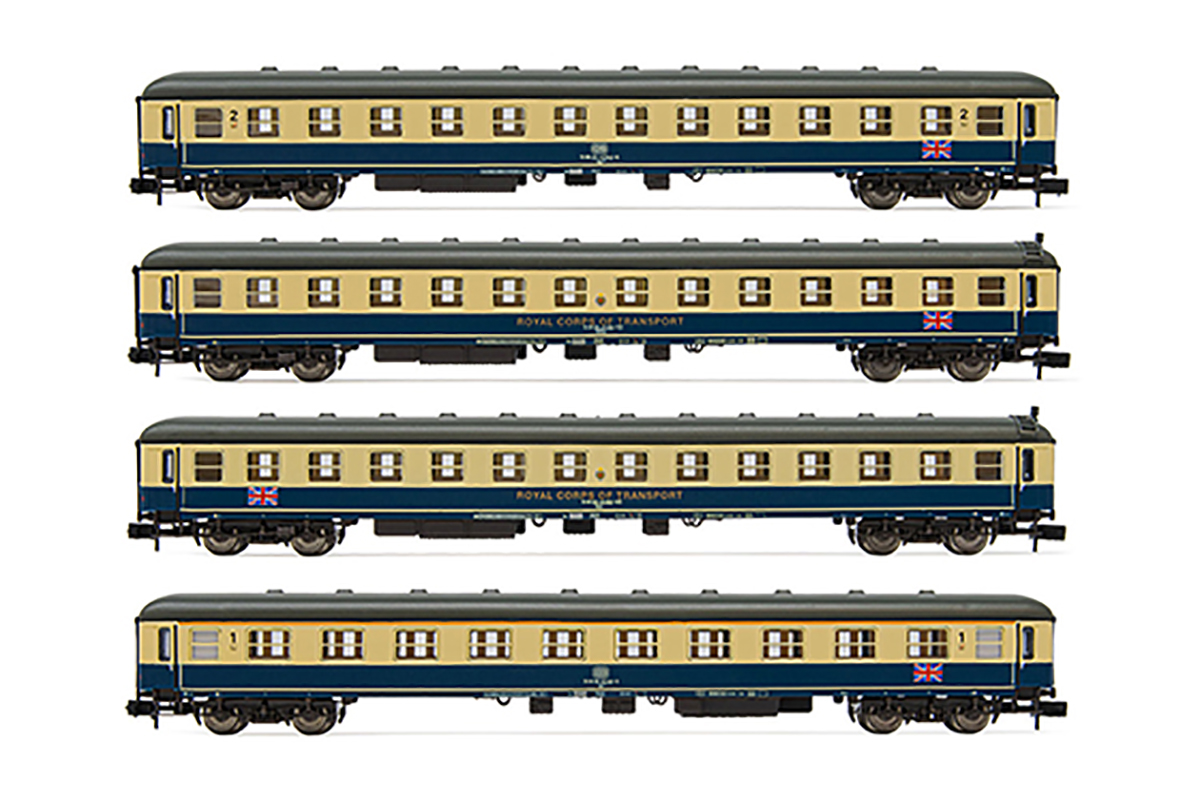
Running from 1945 until 1990, the train of the British Royal Corps of Transport, often known as ‘The Berliner’ was a British military train that ran daily through Soviet occupied East Germany to the British sector of West Berlin, arriving at Charlottenburg station. During the journey, the train doors were locked and passengers, primarily military personnel and civil servants, were accompanied by armed guards. The 145 mile journey was usually completed in around 4 hours.
Travelling isn’t the easiest thing to do in the current climate. However, you don’t need to go abroad to go on an adventure when you can go on a #HornbyHoliday! This summer we are bringing you our greatest ever ‘Summertime Challenge’, which is open to anyone and everyone!
For your chance to WIN £1000 worth of Hornby prizes, all you need to do is create a summertime themed layout!
https://uk.hornby.com/community/blog-and-news/news/hornbyholiday-summertime-layout-challenge
SAVE THE DATE! #SpamFest is coming to Instagram 13-15th of August!
We are pleased to be working with Bluffers to Buffers, Neville Grove and Flyingscotsdan (From Instagram) to host a weekend of Social Media SpamCan goodness! We invite you to share your pictures and videos of OVS Bulleid’s finest Un-rebuilt Merchant Navy, West Country and Battle of Britain locomotives on your layout. Use the hashtag #SpamFest, tag us in, and we’ll do the rest!
As an added bonus we will be giving away one of our new Merchant Navy locomotives that's been treated to deluxe weathering in the Neville Grove studio! (Could Neville Grove link to here: NEVILLE GROVE - Welcome to Neville Grove (weebly.com))
More details on the competition to follow - in the meantime, save the date…!
The summer holidays are fast approaching but do not fear as we have a Kids Zone full of fun activity sheets as well as educational learning activities via the Playtrains Portal! Better yet, if you have any creative little ones who want to embark on their first railway adventure, why not enter them into the #HornbyHoliday Summertime Layout Challenge!
The world of events is gradually coming back to life and we’re pleased to share that The Great British Model Railway Show is heading to the British Motor Museum this autumn! Tickets are available to purchase here (TICKETS – Great British Model Railway Show (gbmrs.com) but we are pleased to be able to offer Hornby Collector Club Members the chance to buy tickets at exclusive prices. For more details and to get your tickets visit https://bit.ly/3ypOPVP . If you aren’t a Club Member you can join via the Hornby website or by calling +44 (0)1843 233512
Thank you for reading this month’s addition of the Engine Shed. As usual we would love to hear any feedback you have either about the featured models or the Engine Shed itself. Messages can be directed to engineshed@hornby.com, written in the comments below, or directed towards any of our social media platforms. There is also an Engine Shed section on our forum where you can discuss anything related to any of the topics covered by the Engine Shed including feedback, memories and suggestions. Make sure to look out for the next edition of the Engine Shed in a month’s time when we will be bringing you even more exciting progress.
All the best,
The Engine Shed Team